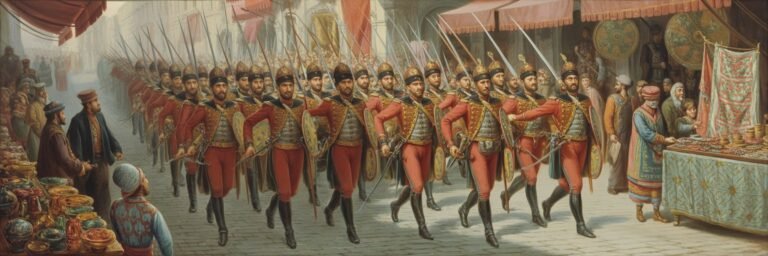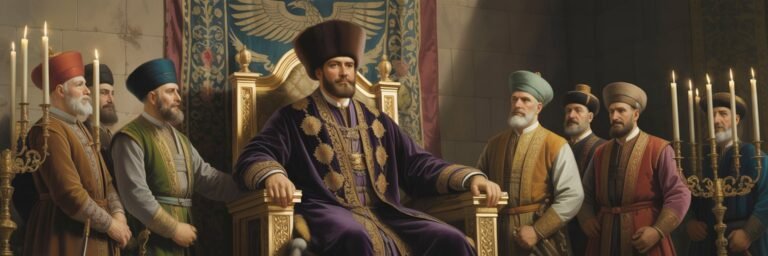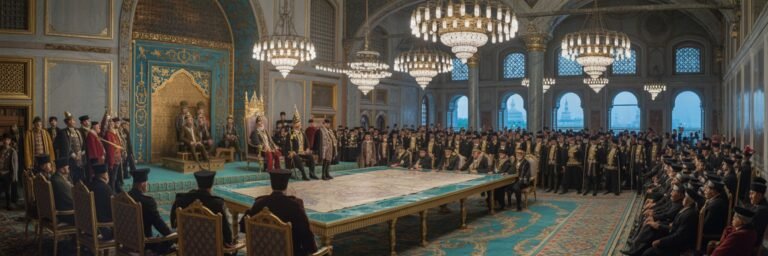INTRODUCTION
Amid a world engulfed in the pageantry of history, the Ottoman Empire sheds a unique light of mystery and intrigue. A realm that spanned three continents and seven centuries, it was a grandeur of power, culture and wisdom. An empire born from the ethos of medieval Turko-Persian traditions intertwined delicately with Islamic, Byzantine, and Roman influences. The Ottomans ruled with an iron hand but also displayed a finesse and acumen for conventions that brought about a progressive society, stretching from Southeastern Europe and western Asia to Northern Africa. This piece is an in-depth exploration unraveling the secrets behind the Ottoman Empire—their enigmatic rule, the theories and interpretations behind their existence, the mysteries and controversies surrounding them, their symbolic and cultural significance, the modern investigations outlining the Empire’s legacy, and the conclusion.
HISTORICAL BACKGROUND
The edifice of the Ottoman Empire was laid down in 1299 under the able leadership of Osman I. He began as a minor emir in northwestern Anatolia. However, his ambitious vision led him to gradually integrate the disparate, fragmented principalities comprising the fallen Seljuq Sultanate, which had crumbled alongside the demise of the Mongol Empire. Their strategic conquest followed the lines of ‘ghazawat,’ a holy war against the Byzantine territories.
Under Sultan Mehmed II, the Ottomans breached the walls of Constantinople in 1453, heralding an epoch of unprecedented territorial conquests and an era marked by impressive architectural, cultural, and political rebirth, aptly named the Classical Age (1453-1566). In this short span, the Ottoman sphere swelled to span three continents encompassing empires such as Egypt, Algeria, and Hungary, the final stroke of its western expansion.
THEORIES AND INTERPRETATIONS
The Ottomans, like all empires, were a product of their geopolitical context. It was a complex mixture of military might, religious zeal, political acuity, and cultural blending, a cauldron producing an empire with deep-seated impacts on the regions it touched. The prime historical scholarly theory expounds the fact that the longevity of the Ottoman Empire was substantially endowed through its explicitly tolerant approach towards the different ethnic and religious communities it ruled. Popularly known as the Millet System, it effectively allowed several religious communities to preserve their traditions and laws, creating a harmoniously functioning multicultural realm.
Professor Halil İnalcık, a renown Ottoman historian, provided an alternate viewpoint explaining the Empire’s success through its pragmatic administrative strategies. He contended that the Sultan derived his power through a complex relationship of reciprocity with his subjects steeped in the principle of justice, also known as ‘Adalet.’
MYSTERIES AND CONTROVERSIES
Despite the veneer of progressive rule, the Ottomans had their share of controversies, some of which reverberate in the corridors of history to this day. For instance, the Devshirme system—the practice of forcible recruitment of Christian boys trained to become the Sultan’s Janissaries—has caused a stir among historians. Some argue that the system was an exception to the otherwise tolerant religious fabric of the empire, while others argue it was an essential Ottoman way of ensuring a loyal and exceptional civil and military administration.
The Armenian Genocide is another controversial chapter that continues to cast its dark shadow on the Empire’s legacy. Allegedly committed in the last days of the Empire, the massacre of around 1.5 million Armenians remains a horrific tale that Turkey, the successor state of the Ottoman Empire, vehemently denies.
SYMBOLISM AND CULTURAL SIGNIFICANCE
The Ottoman Empire’s cultural landscape was a magnificent tapestry of diverse traditions woven with a deep sense of synergistic pacifism. Visible in every aspect of their society, from architecture to daily lifestyle, symbolism played a pivotal role in shaping the Ottomans’ identity.
The remarkable Ottoman architecture was swathed in symbolic representation. The grand dome of the Hagia Sophia, which was the world’s largest cathedral at the time, was garnished with Islamic symbolism after the conquest of Constantinople, reflecting the merging religions and cultures.
MODERN INVESTIGATIONS
Riding the wave of the 21st century’s fascination with history, several investigations and research initiatives are delving deeper into the Ottoman narrative. Foremost among them is the work of scholars from Kadir Has University in Istanbul, who are using sophisticated technology to unearth the secrets of Ottoman Istanbul by conducting a massive geo-archaeological survey of the ancient city.
Studies on Imperial archives are also giving new insights into the Ottoman bureaucracy, providing a fresh understanding of the Empire’s administrative and societal structure. Such modern endeavors are reshaping perceptions and interpretations of the Empire’s past.
LEGACY AND CONCLUSION
As we ride the horseback of time and look back at the Ottoman Empire, we find an expanse of a profound and lasting legacy. The remnants of Ottoman rule are not only seen in the ceaseless array of domes and minarets that grace Istanbul’s skyline but also in the intertwining cultures, languages, and traditions of the nations born from its ashes.
The Ottomans were masters of fusion—amalgamating disarrayed ethnicities into a single polity, binding the earthly realm with the celestial through skillfully crafted architecture, and intermingling statecraft with religion into a seamless sociopolitical fabric. Underneath the mighty warrior facade lay a refined societal strategist’s heart that nurtured a multicultural bastion of coexistence, an aspect that today’s world can learn immensely from. The powerful black eagle of the Ottoman Empire may have descended into the annals of history, but its influence continues to ripple through time and space, an eternal fact that the sands of time cannot cover.






